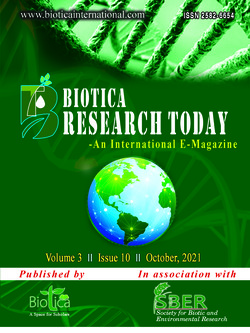
Tomato: Physiological Disorders and Their Management
Gangadhara K.
ICAR- Central Institute of Arid Horticulture, Central Horticultural Experimental Station, Kalol, Gujarat (389 330), India
Raman Selvakumar*
ICAR- Indian Agricultural Research Institute, Pusa Campus, New Delhi, Delhi (110 012), India
Praveen Kumar Singh
ICAR- Indian Agricultural Research Institute, Pusa Campus, New Delhi, Delhi (110 012), India
Manjunathagowda D.C.
ICAR- Directorate of Onion and Garlic Research, Rajgurunagar, Pune, Maharashtra (410 505), India
Jugendra Kumar
ICAR- Indian Agricultural Research Institute, Pusa Campus, New Delhi, Delhi (110 012), India
DOI: NIL
Keywords: Blossom End Rot, Disorder, Management, Tomato
Abstract
Tomato is India's third most important horticultural crop, yet it is affected by a variety of abiotic causes. Blossom end rot, fruit cracking (radial and concentric cracking), puffiness, sunscald, blotchy ripening, and other physiological diseases harm the crop. This article will help growers in understanding various physiological disorders that impact the crop, and the corrective measures to take in order to develop a nutritious crop.
Downloads
not found
Reference
Babadoost, M., 2014. A report on plant disease, Department of Crop Sciences, University of Illinois at Urbana-Champaign. RpD no-981.
Dorais, M., Papadopoulos, A.P., Gosselin, A., 2001. Greenhouse tomatofruit quality. In: Janick, J. (ed.), Hort. Rev. 5, 239-319.
Khavari-Nejad, R.A., Najafi, F., Tofigi, C., 2009. Diverse responses of tomato to N and P deficiency. Int. J. Agric. Biol. 11, 209-213.
Masarirambi, M.T., Mhazo, N., Oseni, T.O., Shongwe, V.D., 2009. Common physiological disorders of tomato (Lycopersicon esculentum) fruit found in Swaziland. J. Agric. Soc. Sci. 5, 123-127.
Suslow, T.V. and Cantwell, M., 2009. Tomato: Recommendations for Maintaining Postharvest Quality, pp. 1-5. Tomato Produce Facts, Postharvest Technology Research and Information Center. UC, Davis-CA.
